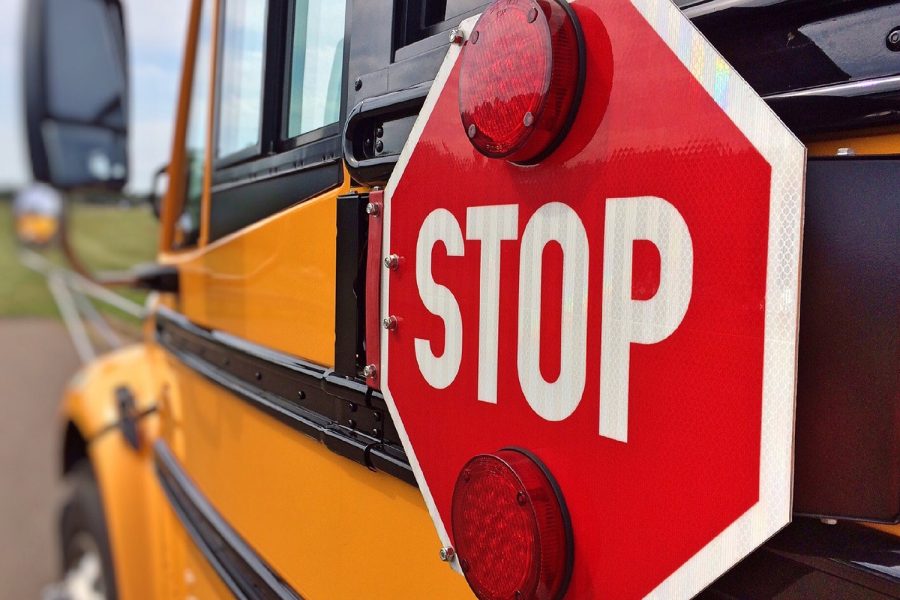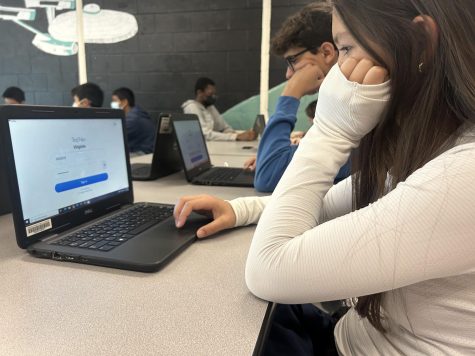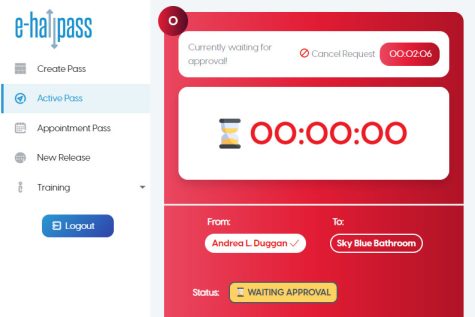Riding Bus Will Change After COVID-19
Riding the buses during COVID-19 is one of the many covid-safety hazards FCPS must manage when students return to school. Although the county temporarily delayed some of the early return to classes, they haven’t yet ruled out the planned return for most students in January. With that in mind, there are plenty of precautions that the administration is planning to enforce to make sure students stay safe.
Students at LMS like Talia R. are experiencing feelings of anxiety related to going back to school while COVID-19 is still a threat.
“I think it is a risk. Tons of kids pass through the bus every day, so if the proper precautions aren’t taken, I would be worried,” said Talia, a bus rider.
With a vehicle such as a school bus full of middle school students, the fear is that others might not pull up their mask all the way, or might touch other people, or not use a provided hand sanitizer. With a disease as serious as COVID-19, it is so important that the kids follow the rules. Talia’s parents worry that it will be difficult for students to follow the guidelines.
The school system has come up with measures they hope will help alleviate some of the anxiety, and the first ones start at home. Making sure students are healthy before going to school is very important. According to Assistant Principal Wendy Eaton, who has worked for years with the bus drivers at Longfellow, parents will need to do a “health check” for each student before coming to school. If parents don’t check their child’s temperature and then send them to school with a fever over 100 degrees, they could spread the virus.
Bus drivers will enforce safety precautions as well. “Students will load from the back seat forward,” Eaton explained, which will mean coming into contact with fewer students. She continued, listing, “Students will sit one per seat (by the window). Students may have their temperature taken before boarding the bus. Students MUST wear a mask.”
According to “Track School Bus,” a school bus focused blog, the buses usually have around 70-80 kids with approximately 40-50 seats. What happens if your school doesn’t have enough buses to carry every kid with their own seat? Well, that is still to be figured out, according to Education Week’s article “In a Pandemic, Who Gets to Ride the Bus? And What About Those Who Don’t?” In the article, Reporters Evie Blad and Corey Mitchell wrote about how, in many school systems, there simply aren’t enough buses for school counties to follow CDC protocol.
The people in charge of transportation in the county are working very hard to come up with ideas on how to deal with these situations and want to get them out as soon as possible. Part of the county’s plan is to stagger which days students attend classes, which has the advantage of having fewer kids on the bus at one time, as well as in the classrooms and hallways.
Other safety measures are also being considered. “Leaving the windows and roof hatches open helps bring in fresh air, reducing the concentration of infectious droplets on the bus and increasing the time children and the driver can be on board,” reported The Conversation in their article “School bus safety during the COVID-19 pandemic: 8 recommendations.”
The concern there, of course, is that it can be pretty cold in winter. Students could get cold very quickly with the wind constantly blowing in their face, even if the heater is also blowing warm air.
Another article from The Conversation website, “How to use ventilation and air filtration to prevent the spread of coronavirus indoors,” suggested that schools could install a device called a “High-Efficiency Particulate Air (HEPA) filter.” This device is said to help reduce the transmission of COVID-19. The device is installed to help with the airflow HVAC systems. This device will make it so students would be able to have the windows closed with the heat on when it is cold outside. The HEPA produces water droplets into the air, making it cleaner and better for kids to be able to breathe with the masks on.
Schools all over the country are trying their very best to contain this disease while thinking of ways to keep the children safe at school, as well as on the way to and from school. Following any stated protocols will go a long way toward keeping families safe.







